






The Centre of Excellence in Rolling Stock (CERS) aims to meet the current and future demands of the GB rail industry for research and innovation to support the next generation of railway vehicles. The CERS links with other centres in the UKRRIN Network to provide a ‘one-stop shop’ for all rolling stock development.
The Centre is integrated into UKRRIN and is focussed on the major themes of Reduced Whole Life Cost vehicles and Future Low Energy vehicles.
A major challenge to the railways in the UK and Europe is to accommodate the agreed requirements for modal shift from road to rail. A big factor in this is the competitiveness of the railway system to support this the CERS will explore a wide range of innovative technologies applied to the design, manufacture, operation and maintenance of railway vehicles. A key aim is to develop new components and vehicles that are designed for low maintenance, high reliability and have integrated monitoring and smart maintenance as part of the vehicle design.
The energy performance of railway systems is an essential factor in maintaining the overall sustainability of the network. Although railways have several inherent advantages, these are in danger of being eroded by rapid technological developments in other modes. The CERS facilitates research into a wide range of energy optimisation techniques and will provide a test bed for innovations aimed at reducing carbon emissions and improving sustainability.
To learn more keep reading below.
The work of the Centre supports the ‘Four Cs’ of the Rail Technical Strategy and covers rolling stock of all types including passenger, high speed, freight, Light Rail, and Metro. The research will lead to innovations that will reduce cost and carbon emissions. The Centre supports research in several key areas of the RSG ‘Fast Track to the Future’ vision including contributions to three of the five key technology areas which are: high value rolling stock systems, whole life asset optimisation and through life management and energy management.
The detailed activities undertaken by the Centre will be shaped by the needs of the industry partners. The following interconnected facilities will provide world-class research infrastructure that has the flexibility to support emerging research priorities in the following key areas:
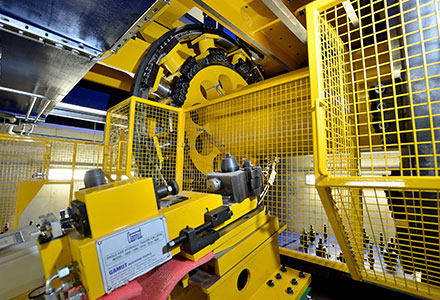
The CERS at Newcastle University is focused on four core areas:
• Mechanical Testing;
• Tribological Testing;
• Propulsion System Testing (see Traction Drivetrain and Braking Facility section);
• Metrology
The Structural Integrity and Crashworthiness Facility will be located at The Advanced Engineering Research Hub, a new off-campus location through £4.3M investment from Newcastle University. A major part of this investment is linked to power and laboratory related infrastructure to accommodate CERS requirements.
The facility includes equipment able to test structures at the component level under both static and dynamic multi-axial loads, to simulate service conditions. An impact test machine will be set up at Newcastle University to allow assessment of structural response (at component level) under highly dynamic loading conditions. This will include, for instance, tensile and compression as well as shear, flexure, peel, tear, cyclic and bend tests using an environmental chamber enabling testing from -70C to 135C. Other types of investigations e.g. contact fatigue will be facilitated though the ability to perform testing on a micro pitting rig as well as a rolling contact rig. Scratch testing will allow the evaluation of coating and substrate adhesion as well as anti-scratch resistance.
Accelerated testing will be possible as well as the assessment of interactions between components under realistic conditions. Developments in materials and manufacturing techniques have the potential to deliver significant weight reductions and improvements in performance and through life costs. The emerging knowledge will be used to inform the development of appropriate standards for the new materials and processes.
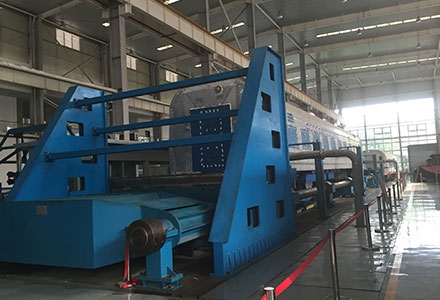
Building on the capabilities of the existing full-scale rolling contact test facilities at Huddersfield a new facility will provide a Hardware-in-the-loop (HiL) train braking test facility, including precise wheel-rail creep control and climatic conditions to accurately recreate dewpoint and low adhesion conditions.
This is complemented with the development of a unique state-of-the-art Propulsion Systems Facility at Newcastle University’s Advanced Engineering Research Hub. Equipped with a twin 1.2+1.2MW Dynamic Drivetrain, it will enable the development and validation of rail power transmission systems from traction gearboxes and motors to fully bogie drive systems. The Newcastle facility has environmental test capability allowing close capture chambers to be built around gearboxes, motors, batteries etc. under test. This will allow testing to be conducted in conditions of -40ºC to140ºC. Further infrastructure will also be added to test drivetrain and gearbox sub-systems to improve performance and reliability. Newcastle University is home to the National Gear Metrology Laboratory and has world-class expertise and facilities related to gearbox design and testing.
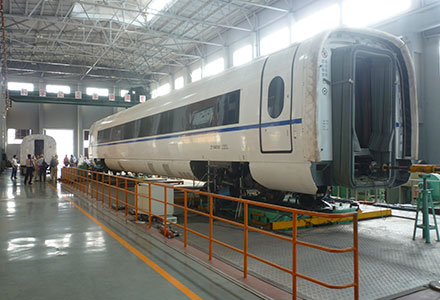
The Centre of Excellence in Rolling Stock will include a unique full motion train simulator capable of providing a high-fidelity reproduction of the environment experienced by passengers and crew on a wide range of rolling stock from light rail vehicles to high speed trains. Use of simulators plays an increasingly important part in training drivers and other operational staff but also offers the opportunity for research in a variety of areas from driver behaviour to ride quality and passenger comfort.
The test facility will be configured to support multiple payloads to represent passenger car body, driving cabs, on-track plant and vestibules / gangways. These will provide the capability to assess suspension design improvements and investigate passenger’s perception of comfort in high speed curve transitions and in response to varying track quality. It will enable quantified assessment of vehicle interiors (design, HVAC, lighting, vibration environment) to be undertaken as well as providing a testing environment for on-board technologies. When in cab-simulation mode the facility will provide unrivalled levels of realism to give the true ‘feel’ of operating a train under a wide range of conditions. This in turn will provide the opportunity to study driver’s response to real world situations, assess in-cab technology and develop human-machine interfaces together with a variety of opportunities for research in the fields of safety and performance. The facility will also be made available for crew training when not required for other purposes.
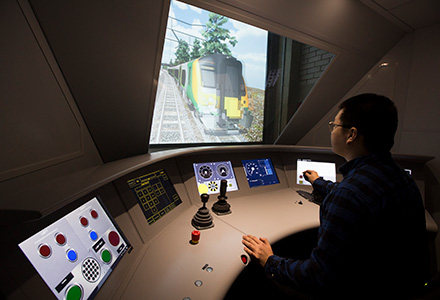
With a strategic GB vision to increase electrification of existing railway lines and adoption of high-speed electric trains, recent studies commissioned by RSSB have identified a lack of GB expertise in the research and development of improved railway pantograph systems and the overhead line.
The Rolling Stock Centre will provide a unique full-scale pantograph dynamic test rig with hardware-in-the-loop (HiL) facility for determination of OHL dynamic interaction forces. This will be coupled with state-of-the-art mathematical simulation tools including access to and development of the University of Huddersfield’s pantograph dynamics software package. Our computational tools enable assessment and understanding of various aspects including:
The key benefits are reduction of wear and maintenance costs of the pantograph and overhead line equipment whilst improving current collection quality at high speed and with multiple pantograph operation. This will in turn lead to increased reliability and availability of rolling stock and infrastructure.
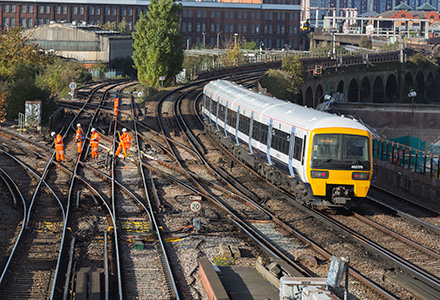
The Loughborough team brings expertise and capability in control, mechatronics and Hardware-in- the-Loop (HiL) testing for railway systems that does not exist as a primary skill elsewhere in the Network. As part of UKRRIN the aim is to build upon existing capability focused around a ‘full system’ simulation model that bridges the Infrastructure and the Rolling Stock Centres of Excellence, to create a world-class virtual design facility for rolling stock. It can be equipped with state-of-the-art hardware and software for the virtual design, modelling, simulation and monitoring of rolling stock and components for rolling stock.
The capability is focused around a ‘full system’ simulation model, using multi-body dynamic simulation package with which passive elements, active elements and any physical demonstrators can ‘interact’ (i.e. using co-simulation or hardware-in-the-loop). The physical parts can occupy a laboratory with an adaptable floor space that enables a variety of flexible test rigs and actuator systems to be installed. It can be configured to operate multiple hardware-in-the loop test environments and provides the opportunity for a variety of vehicle systems demonstrators, including, as part of the Infrastructure Centre, mechatronic switch demonstrators. The aim is for the testing infrastructure to be flexible, allowing it to be reconfigured to meet the emerging needs of new industrial R&D concepts and emerging research projects allowing a pipeline for testing radical new ideas, and further development and testing.
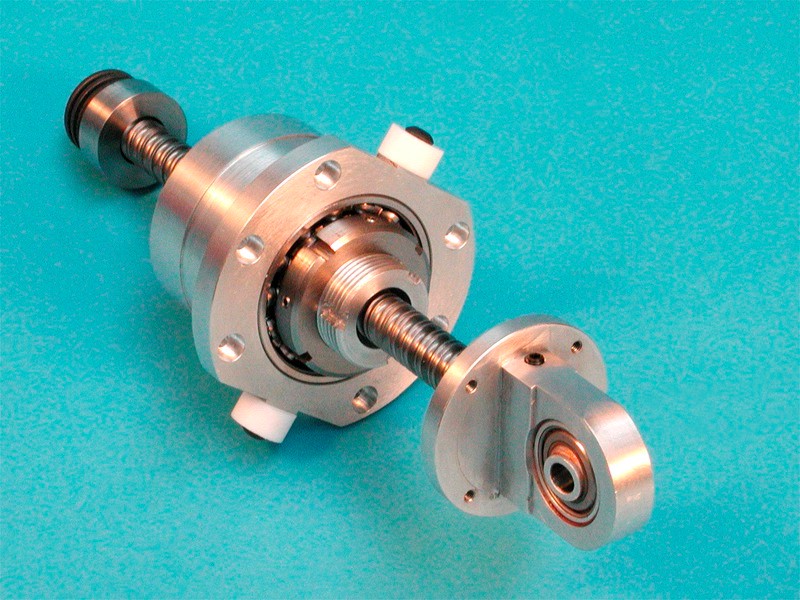
The Department of Engineering at the University of Cambridge has extensive prototyping and testing facilities with a broad remit and cross-industry specialism. The Control Research Group within the Engineering Department is well-known for its contributions to the theory and practice of vehicle suspensions, both advanced passive, semi-active and active methodologies and for high-level industrial collaborations leading to product development arising from new theory. A significant innovation in the domain of passive mechanical control has been the introduction of the inerter concept and device, now a standard component on Formula One cars. Working in collaboration with two other UKRRIN CERS universities specifically Bristol and Huddersfield, Cambridge is seeking to develop the approach for rail vehicles and to realise the potential that has been shown in preliminary studies for improvements in a variety of performance measures, such as; T-gamma, ride comfort and maximum speed.
The Control Group carries out research which ranges from fundamental theory through to applied control. Some areas of emphasis include:
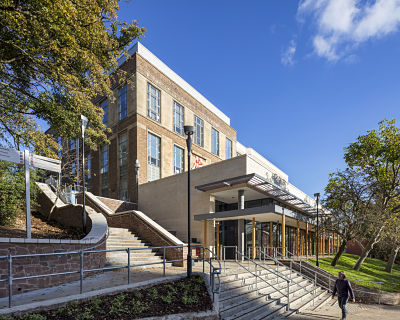
The Vibration Suppression Research Unit within the Dynamics and Control Group at the University of Bristol, comprises of testing hardware facilities include INSTRON hydraulic actuators (25-500 kN), D-space controllers, 6-DOF shaking tables, wind tunnel facilities for aerodynamics and acoustics, and software such as the railway vehicle modelling software, VAMPIRE. The research of the Dynamics and Control Group focuses on understanding and enhancing structures’ dynamic performances. The research group has well equipped laboratories, most notably, the state-of-the-art £15M testing facilities known as the Bristol Laboratory for Advanced Dynamic Engineering (BLADE, EPSRC GR/R51261/01).
As one of 14 partners in the UKCRIC, the University of Bristol has received capital investment of £12M for the construction of a SoFSI laboratory to enable large prototype scale experiments for use by both academics and industry. This laboratory will integrate structural and geotechnical engineering for soil structure testing and will fill key gaps in our understanding which cannot be resolved using conventional, smaller scale, laboratory tests or prototype observations. The laboratory will be fully active from 2021 and comprise of the facilities including a 6mx4m (50t) biaxial shaking table, an 6mx5m soil pit with a depth of approximately 4m, a state-of-the-art soil box incorporating dynamic actuators and a high performance (10g) 6-DOF 1mx1m shaking table , which can be reconfigured and augmented to suit the needs of particular experiments under both base excitation and top-down dynamic loads for studying coupled railway-soil problems.
The Centre presents an opportunity for:
The UK research base is well recognised internationally for its innovation and expertise in all aspects of rolling stock design and this is manifested by their highly successful presence in international research consortia and attraction of consultancy contracts from the UK and abroad. However, this is currently fragmented in various universities around the UK and opportunities to further exploit this knowledge are often lost. The CERS brings together subject matter experts from leading UK universities, consolidating their knowledge and offering a powerful opportunity to collaborate and ensure opportunities are not lost.
Collaboration with the Centre saves industry time and effort in finding the specific expertise needed, having at their disposal one of the most up-to-date test facilities dedicated to rolling stock development and access to a broad base of internationally recognised scientists and engineers with many years’ experience in the rail industry.
The Centre supports the UK rail industry in developing innovative products and solutions to increase the performance, efficiency, reliability and competitiveness of rolling stock.
The Centre combines and builds on the expertise of five leading railway research universities in the UK. It brings together the Institute of Railway Research at the University of Huddersfield, the Centre for Railway Research (Newrail) and the Design Unit at Newcastle University, the Control Systems Group at the University of Loughborough, The Vibration Suppression Research Unit at the University of Bristol and the Control Group in the Department of Engineering at the University of Cambridge.
The combined facilities and scientific expertise of these teams have enabled the creation of a Centre of Excellence of unrivalled capabilities in railway research with worldwide reach and forming the largest such facility in Europe dedicated to promoting innovation in rolling stock. The Centre will provide existing and new facilities based at the University of Huddersfield with linked supporting facilities at the Universities of Newcastle, Loughborough, Bristol and Cambridge. The interconnected facilities of the CERS will provide world-class research infrastructure that has the flexibility to support emerging research priorities.